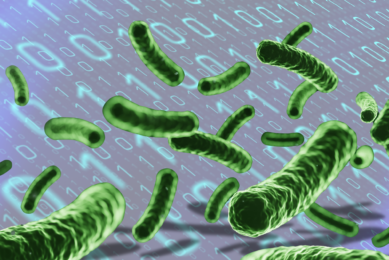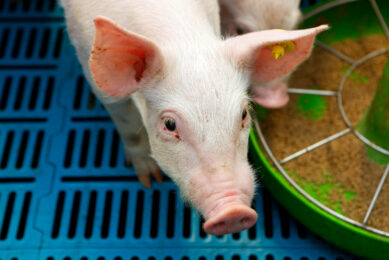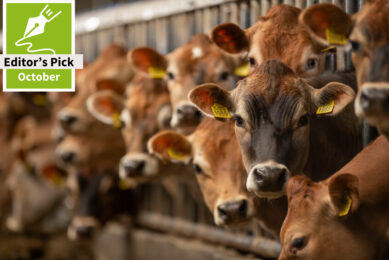Accelerate gut maturation to optimise performance
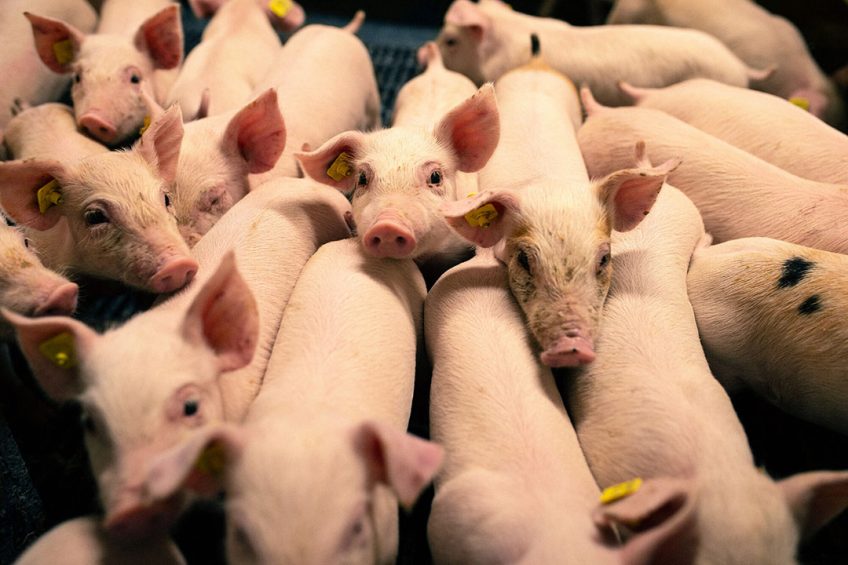
Targeted nutrition from a young age is essential. Yet rising costs and limited availability of raw materials can disrupt feed strategies and challenge gut development during this critical time. Feed additives offer an effective solution.
For producers, the development of a mature gut structure and beneficial microbiota as early as possible in the production life cycle is essential – both in terms of animal welfare and performance.
To understand why, it’s necessary to first look at how the gut microbiota develop in young animals. It takes time to establish a mature microbiome, during which the young animal is susceptible to non-beneficial bacteria; meaning valuable energy is often diverted away from growth to overcome disease challenges.
Chicks, for example, do not hatch with an established microbiota and are immediately challenged by a variety of harmful microorganisms, such as E. coli, C. perfringens and E. cecorum. In fact, it takes several weeks for the bird’s microbiota to develop fully, making the first 21 days a critical period for gut development.
Outside factors can also disrupt the formation of a mature microbiome in piglets. This is despite early nutrition helping to provide initial colonising events and the sow continuing to donate bacteria during feeding. As the growing piglet moves away from the sow, the presence of pathogens, changing nutrition, and stress can all impact the diversity of the microbiota and potentially disrupt gut integrity.
The key to production success, therefore, is to support the rapid development of a healthy and mature microbiota, particularly in view of growing global pressure to reduce or remove antibiotics from the food chain. In this context, building a strategy around the concept of nutribiosis – where nutrition, the microbiome, and the gut and immune function are aligned – will deliver the strongest results.
So what does this look like in practice?
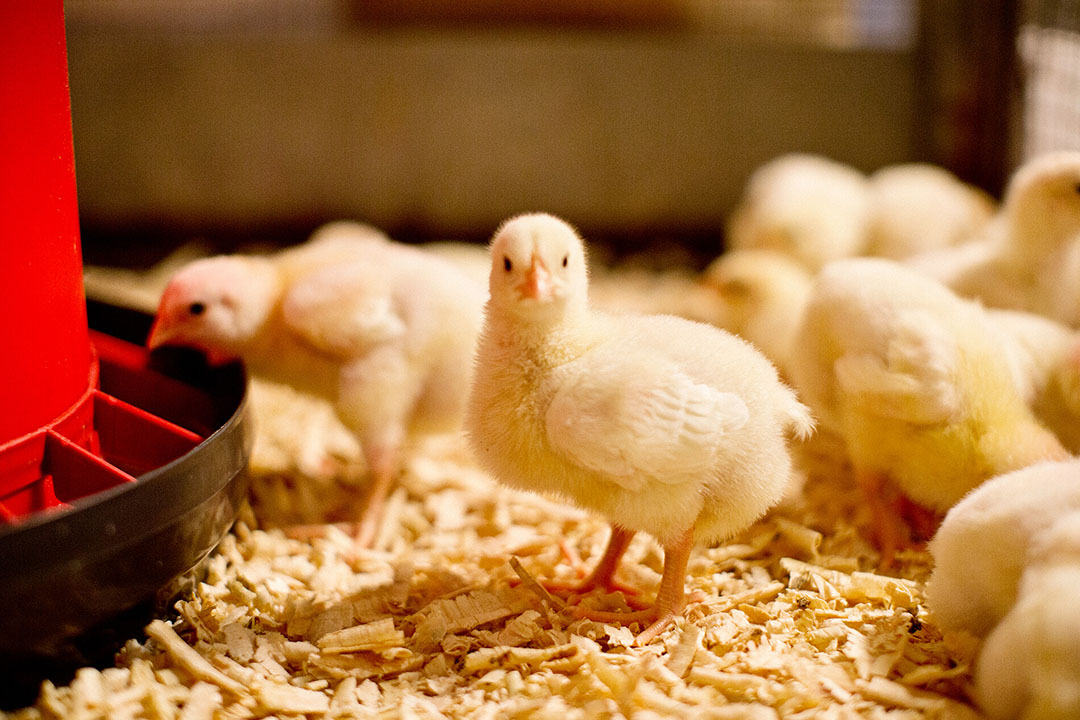
Probiotic optimises gut health
According to research, feeding birds probiotics from day one promotes the quick establishment of a positive microbiota and guards against colonisation by non-beneficial bacteria. However, not all probiotic strains provide the same level of defence, which is why Enviva Pro contains 3 specific Bacillus strains that were selected from a library of thousands. This probiotic strengthens the gut structure and creates a favourable nutribiotic state, encouraging the growth of beneficial bacteria. As a result, this multi-strain probiotic accelerates the natural gut maturation process and delivers a more mature gut by 21 days; leading to powerful outcomes in terms of flock performance and liveability.
Phytogenic blend boosts performance
When it comes to piglet weaning, one of the most pressing concerns is the activity and incidence of diarrhoea. Diarrhoea reduces nutrient use and may disrupt the developing microbiome because of the constant shedding; potentially resulting in a raft of associated health problems including dehydration, weight loss, lower immune function, and poor growth performance. In this scenario, phytogenics offer multiple benefits by improving intestinal function and gut health – and Enviva Eo is a compelling case in point. By stimulating the release of 3 major digestive enzymes in the pancreas, this nature-identical phytogenic blend ensures more nutrients are absorbed from the feed and used as energy for animal growth. As a result, it improves feed intake and daily gain, leading to a reduction in the incidence of diarrhoea in piglets (Figure 1).
Figure 1 – Enviva Eo improves performance and reduces diarrhoea incidence in weaned piglets (35 days).
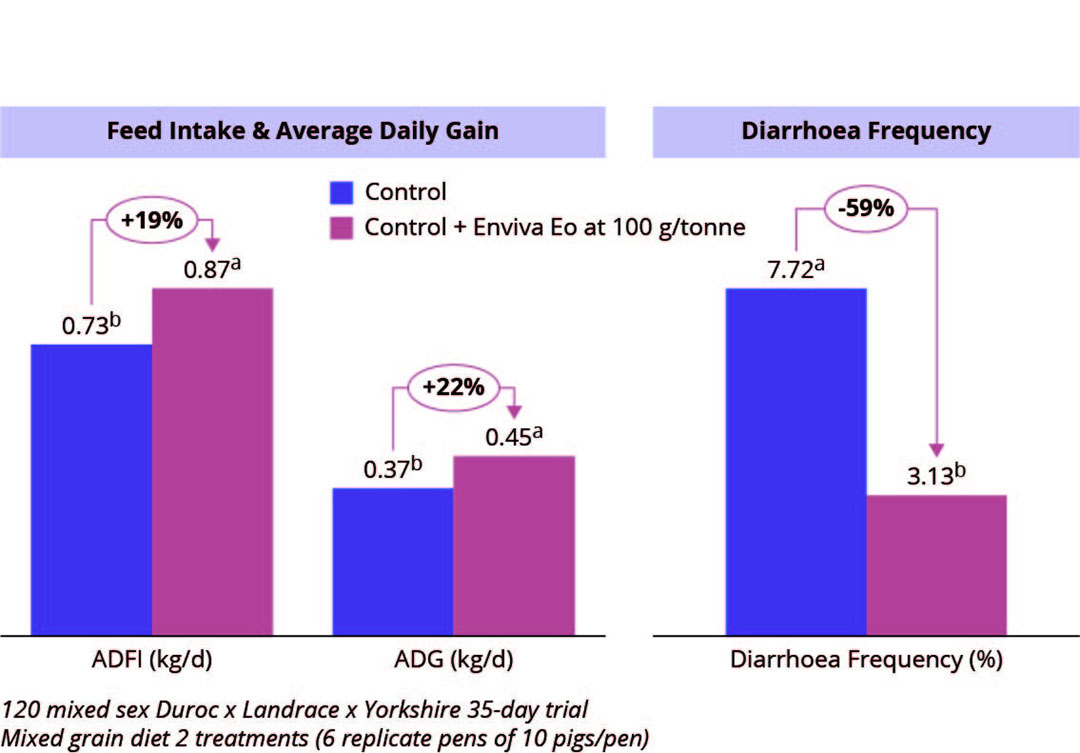
Protease improves digestibility
Studies have shown that high levels of undigested crude protein negatively impact microbial communities in the distal part of the gastrointestinal tract in broilers. Of particular concern is the fact that it can result in a corresponding rise in levels of protein fermenting bacteria such as C. perfringens; the causative agent for necrotic enteritis.
The goal for producers is to prevent these detrimental conditions developing in the gut by boosting protein digestibility – and this is where Axtra Pro has a vital role to play. With the ability to cleave a peptide chain at almost any position, this broad-spectrum protease ensures valuable amino acids are made available for muscle deposition and growth, irrespective of the variability of the source.
Figure 2 – Axtra Pro provides digestibility benefitsin broilers.
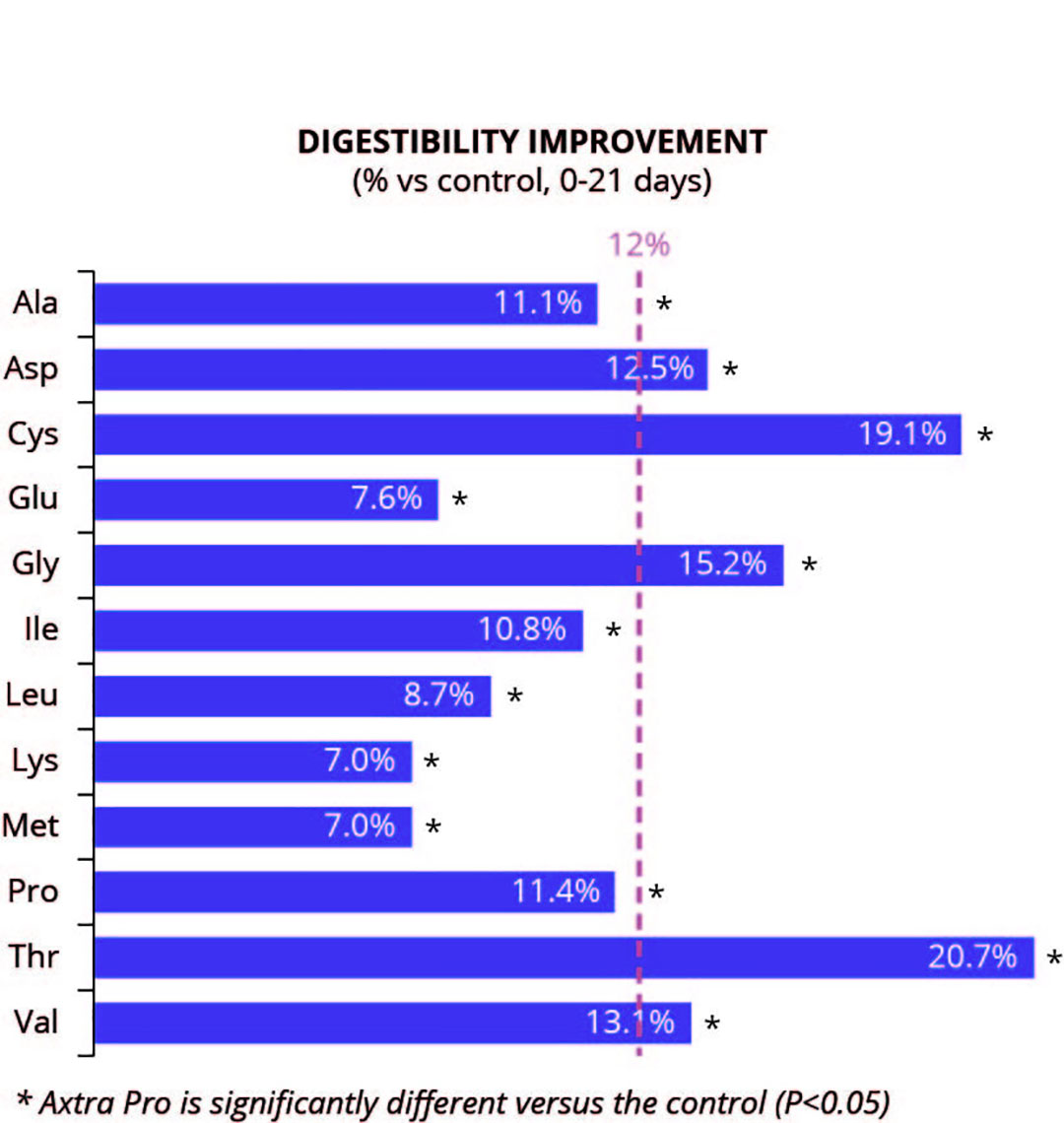
Crucially, trials have shown this single protease can improve the amino acid digestibility of feed ingredients by 12% in broilers aged up to 21 days (Figure 2), and by an average of 2.8% in broilers aged 25-34 days.
This action reduces the level of undigested protein reaching the hind gut, which in turn means that less substrate is available for potentially non-beneficial bacteria. In this way, Axtra PRO actively helps to create a favourable nutribiotic state and enhances performance.




